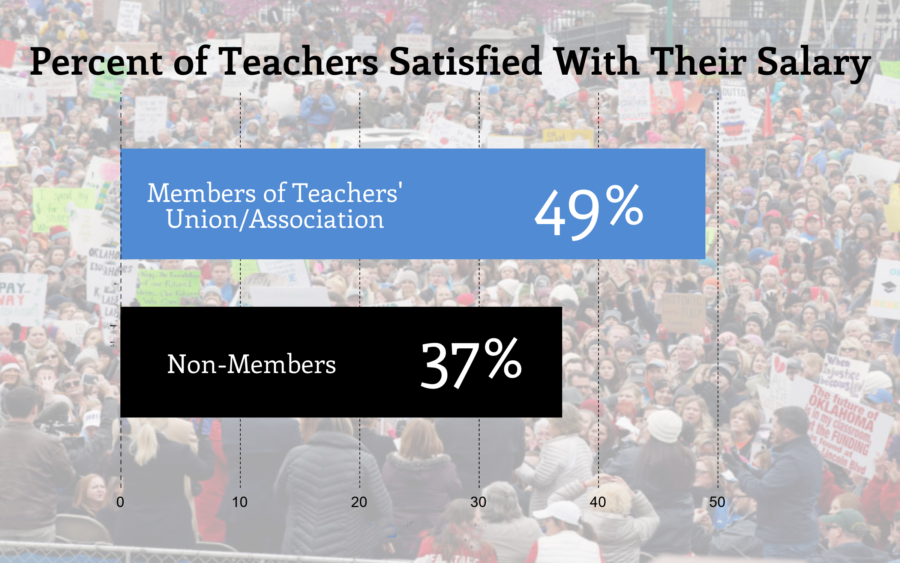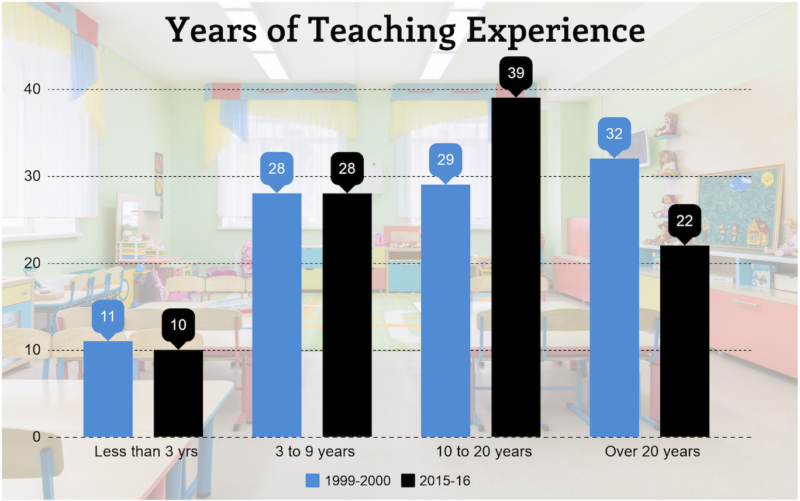In 2016, the National Center for Education Statistics (NCES) polled 40,000 public school teachers across the country as part of the National Teacher and Principal Survey. The survey covers a wide range of topics about the teaching profession. The complete report will be issued later in the year, but some of the results from the survey are being released. Here are a few of the highlights so far.
The Teaching Force Is Still Predominantly Female and White
The 3.8 million public school teachers (full and part time) in the United States in 2015-16 is significantly higher than the 3 million who were teaching in 1999-2000. During that time, K-12 student enrollment increased 7 percent from 45.9 million to 49 million. About 77 percent of public school teachers today are female.
Despite the attention given to the need to recruit more teachers of color, little progress has been made in diversifying the profession. Overall, the percentage of White teachers has declined slightly from 84 percent in 1999-2000. In 2015–16, about 80 percent of public school teachers were White, 9 percent were Hispanic (an increase of 3 percent since 2000), 7 percent were Black, 2 percent were Asian, and 1 percent were of two or more races.
The Average Teacher Has 14 Years of Experience
In the 2015-16 school year, teachers in public schools had on average about 14 years of experience and worked roughly 53 hours a week.
More Teachers Hold Advanced Degrees
The percentage of public school teachers who hold a postbaccalaureate degree (i.e., a master's, education specialist, or doctoral degree) has increased since 1999-2000. Fifty-seven percent had such a degree in 2016, compared to 47 percent in 2000. This trend is evident at both the elementary and secondary levels. Roughly 55 percent of elementary school teachers and 59 percent of secondary school teachers held a postbaccalaureate degree in 2015–16, whereas 45 and 50 percent, respectively, held a postbaccalaureate degree in 1999–2000. Furthermore, traditional public school teachers are much more likely to have a master’s degree than their counterparts in charter schools.
Union Membership = Greater Satisfaction with Salary and Job
According to the NCES data, overall, 55 percent of teachers are not satisfied with their salaries. By a significant 12-point margin, however, teachers who belong to a union or education association are more likely to be satisfied with their salaries than those who are not. Almost half of teachers who belong to a union report that they are satisfied with their salaries. Thirty-seven percent of teachers who do not belong to a union say they are not.
When asked to respond to various questions about their job, the data shows a clear correlation between satisfaction with salary and general job satisfaction. For example, if you are satisfied with your pay, you are more likely to believe that your school is run reasonably well and that you and your colleagues are a "satisfied group."

On the other hand, a higher percentage of teachers who were dissatisfied with their salary were more likely to believe that the "stress and disappointments involved in teaching at this school aren’t really worth it" and "I don’t seem to have as much enthusiasm now as I did when I began teaching."
Still, research has shown that teacher job satisfaction generally depends on a variety of factors, including the availability of mentorship (crucial for newer educators), collaboration with colleagues, classroom autonomy, working conditions and support from the administration.
Teachers Spend Too Much of Their Own Money on Classroom Supplies
Overall, 94 percent of teachers spend their own money on classroom supplies. The average teacher spends $479 every year.
If you are an elementary school teacher, you are more likely to spend more than your counterparts in high school. The average amount spent by elementary teachers was $526. For high school teachers, that figure was $430.
In addition, the average amount spent was higher for teachers at city schools ($526) than teachers at suburban, town, or rural schools ($468, $445, and $442, respectively).









